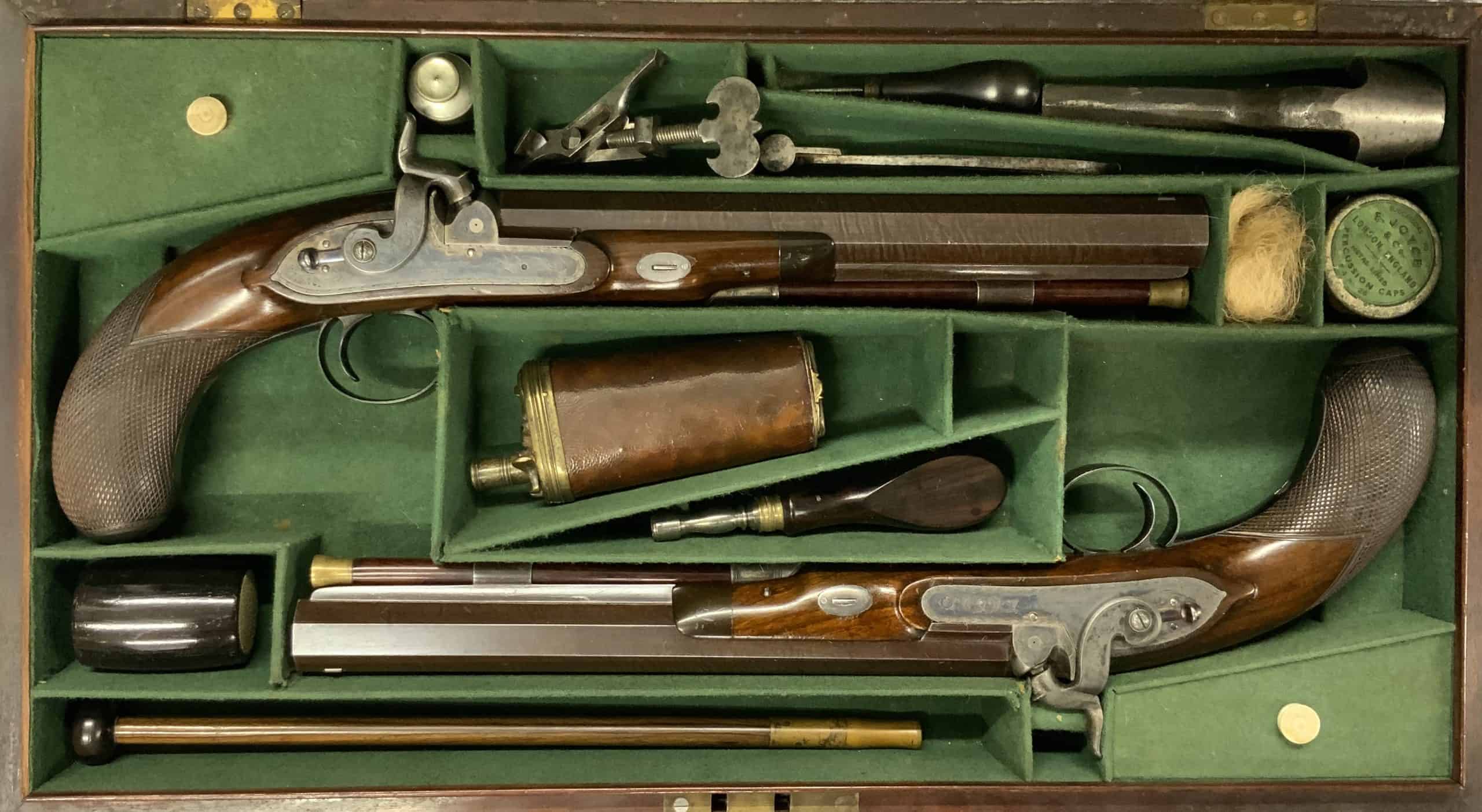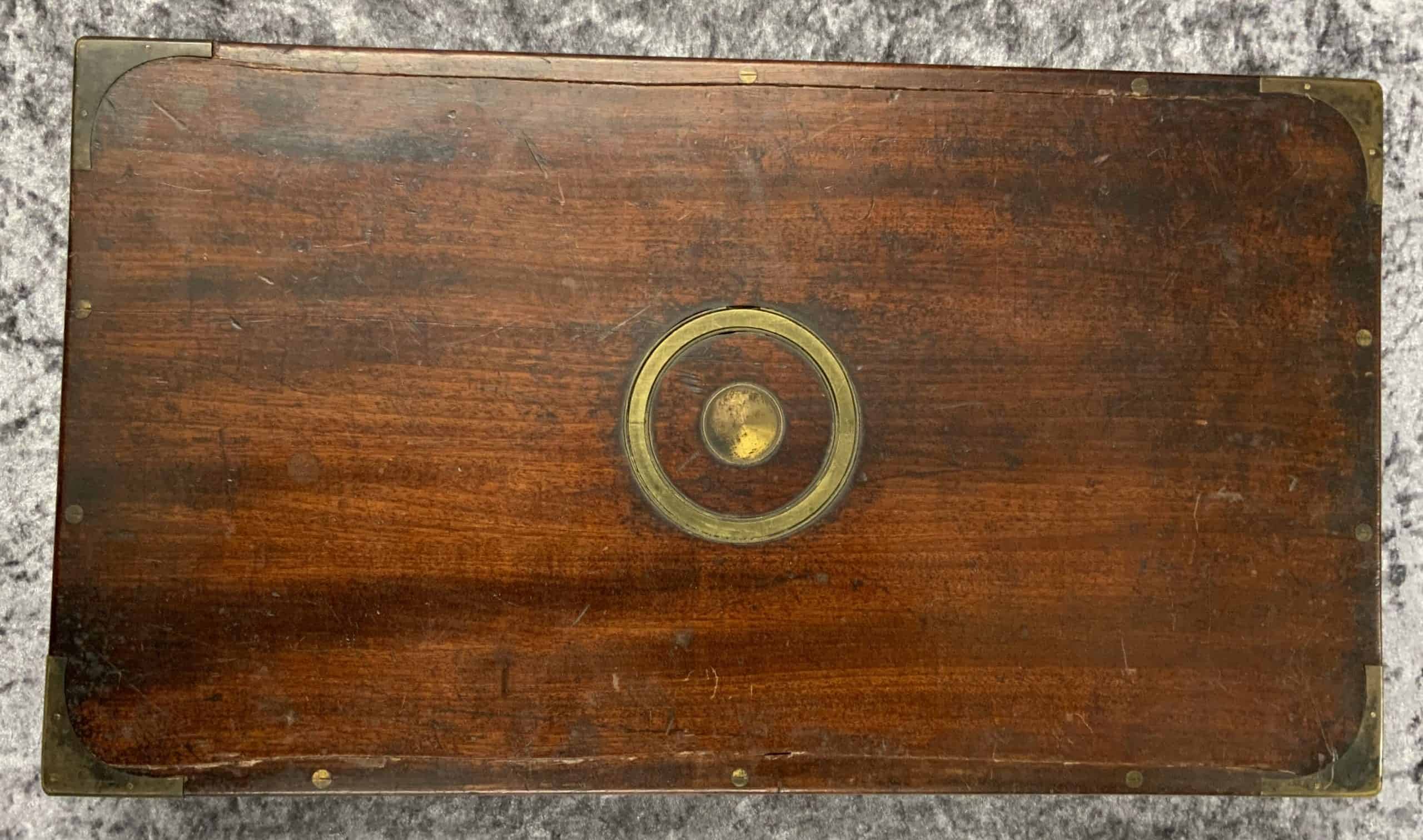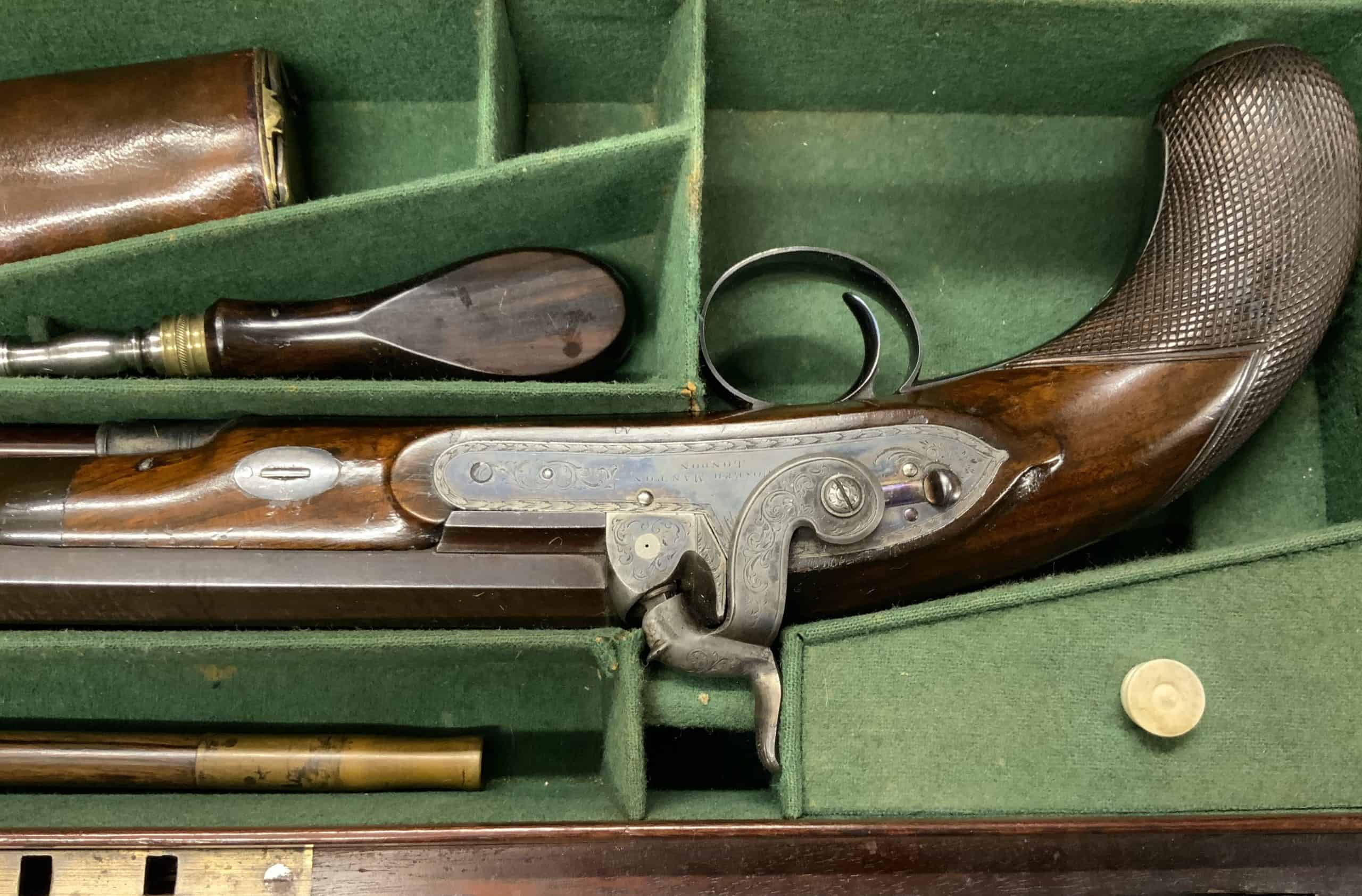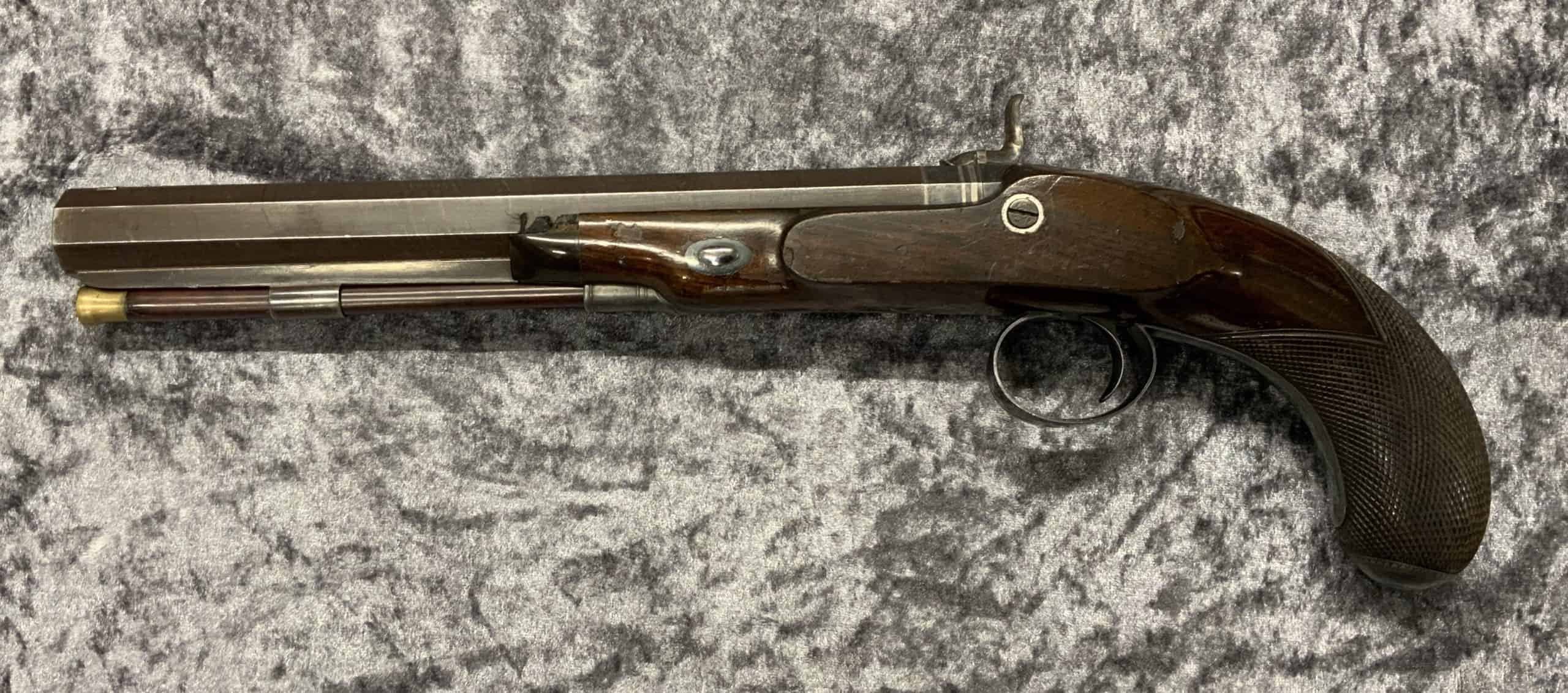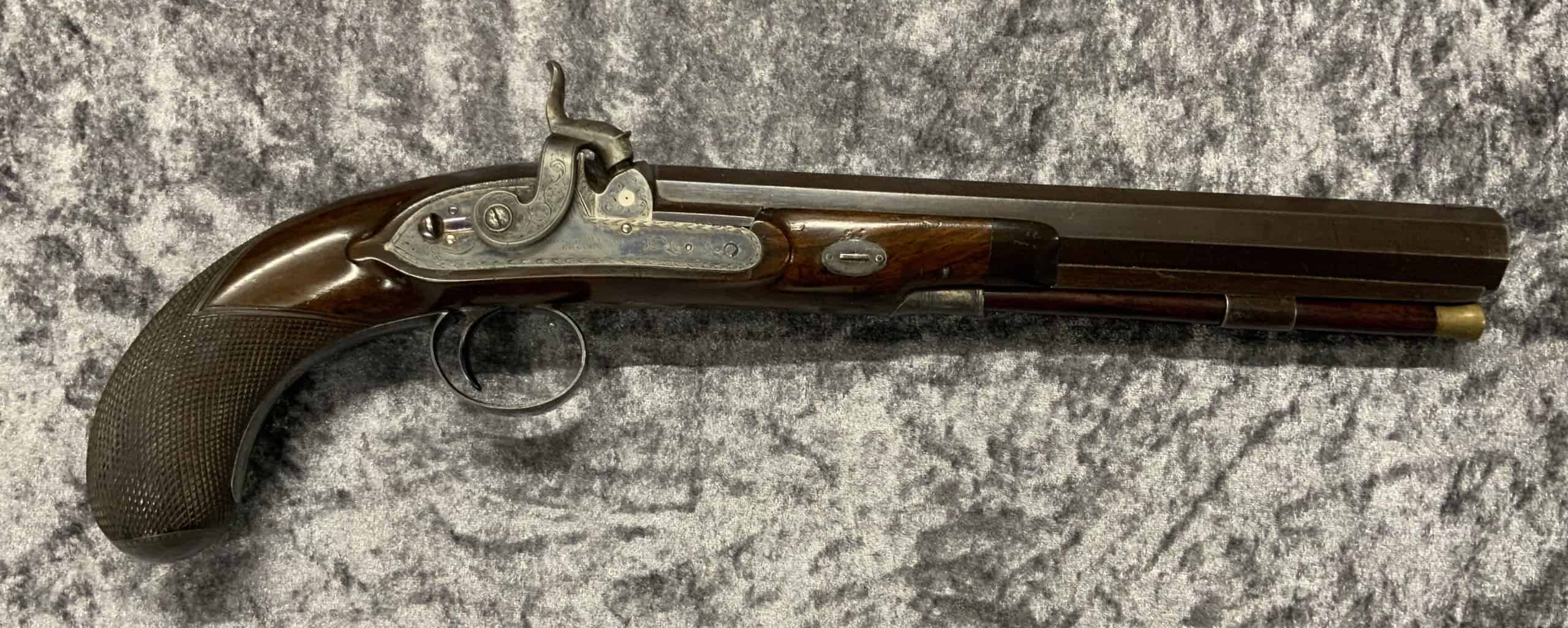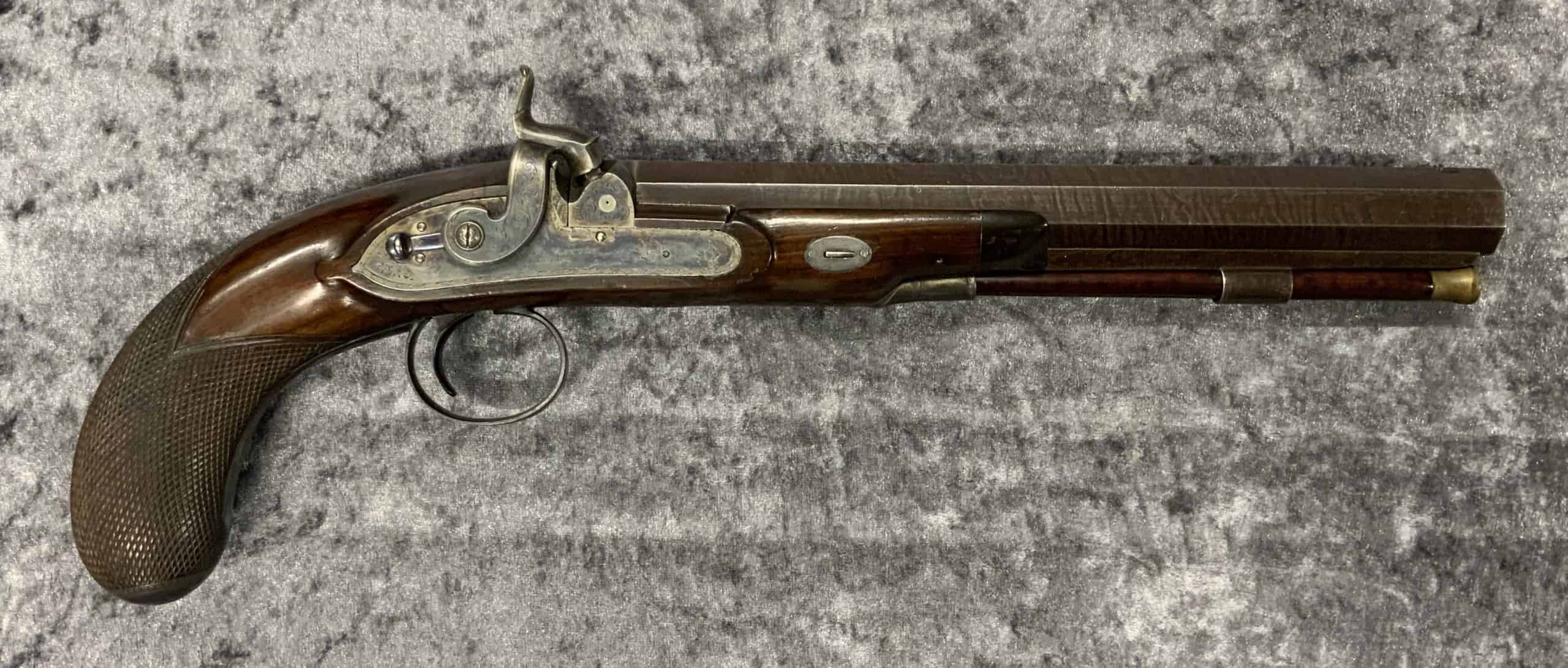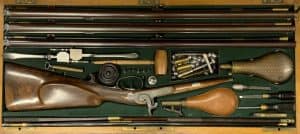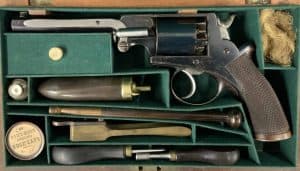Description
Cased pair of Joseph Manton Percussion Duelling Pistols
A cased pair of Joseph Manton percussion duelling pistols converted from flintlock. Serial Numbers 6861 / 6861 Marked on underside of trigger guard. Cal .48 with scratch rifling. 10” octagonal barrels with under ribs. Locks with flat faced serpentine dolphin headed hammers and back sliding safeties are feather border engraved and have “Joseph Manton London” at central portions. Dense European walnut half stocks with flat top chequered grips, have horn for end tips (one damaged). Pistols are housed in their original case with D-ring handle. Cased with accessories including leather covered 3 way flask, patch punch (not original) spring clamp, oil bottle etc. The condition is fine with much original finish.
Joseph Manton (6 April 1766 – 29 June 1835) was a British gunsmith who innovated sport shooting, improved weapon quality and paved the way for the modern artillery shell. Manton was a sport shooter in his own right and a friend of Colonel Peter Hawker.
From 1780-1781, Manton was first apprenticed to a gunmaker in Grantham, Newton. He worked under his elder brother John from 1781 onward. He produced around 100 weapons annually, including both cased duelling pistols and shotguns.
In the early-19th century, Manton invented the tube (or pill) lock, an improvement over Alexander Forsyth’s scent-bottle lock. Rather than storing a reserve of fulminate in a container, they now used single-use pellets or pills. The hammer of the gun was sharpened; when it fell, it crushed the tube/pellet, causing the fulminates to detonate.
Although more reliable than Forsyth’s design and adopted by many sportsmen during the Regency period (and a variant for the Austrian army), it was quickly overshadowed by the percussion cap, which was adopted by the armies of Britain, France, Russia, and America to replace the flintlock.
Manton’s weapons remain some of the most highly sought-after designs of the flintlock age and can fetch more at auction than Holland & Holland’s shotguns. His workforce included James Purdey (who went on to found Purdey’s), Thomas Boss, William Greener, Charles Lancaster and William Moore. These five established major gun firms.
Click here for more Antique Arms
